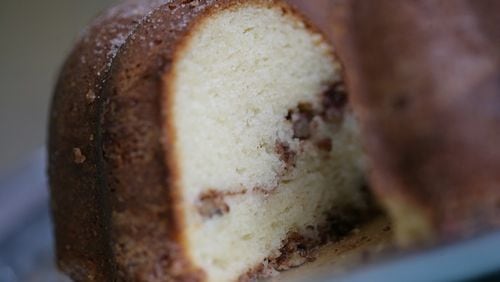Q: When it comes to sifting flour, do you sift first and measure or measure and sift? Why do recipes call for the flour mixture to be added alternately with the liquids?
A: These are the two most commonly asked baking questions to the Free Press Test Kitchen. When it comes to sifting flour it all depends how the word sifted is used in the ingredient list or recipe directions.
If a recipe calls for “1 cup flour, sifted,” measure the flour first and then sift it into a bowl. If a recipe calls for “1 cup sifted flour,” sift the flour first and then measure. What sifting does is aerates the flour (and other ingredients) to make them light. One cup of unsifted flour weighs 5 ounces, and 1 cup of sifted flour weighs 4 ounces.
Sometimes recipes call for sifting flour with other ingredients such as baking soda and powder and salt. You do this to blend the ingredients together.
Now, sometimes you will see flours with “pre-sifted” on the label. Pay no attention to this because flour settles and can pack down when it’s shipped and stored.
The best way to measure flour out of the package or container is also important. First, be sure to use measuring cups for solids when measuring dry ingredients like flours and sugar. Next, give the flour a little stir with a spoon to loosen it in the package. Dip a spoon into the package and spoon the flour into the measuring cup until it’s slightly mounded. If you dip and scoop a measuring cup into the package you’ll most likely pack more flour into the measuring cup.
Once the flour is mounded into the measuring cup, level it off with an unsharpened edge of a knife or wooden Popsicle stick.
It’s not just flour that often needs sifting. Cocoa powder should be sifted to prevent lumps. Confectioners’ or powdered sugar should be sifted if you are using it to make a glaze. If you’re mixing it with butter or cream cheese to make a frosting, you don’t have to sift it.
When alternating, there are a few reasons why it’s done by adding dry-wet-dry-wet-dry to the creamed mixture. “These steps prevent the fat in the batter from separating from the liquids, breaking the emulsion and releasing the air bubbles so essential to a cake’s goo taste and texture,” writes Sarah Phillips in “Baking 9-1-1.”
First you add about one-third of the dry ingredients to the creamed mixture to set the emulsion. Next add half of the liquid. Once that is mixed in you need to quickly add the second one-third of the dry ingredients, Phillips writes. If you take too long to mix in, the cake may end up tough. Finally add in the remaining one-half liquid followed by one third dry ingredients, doing so quickly. Adding these wet and dry ingredients this way also helps the air incorporated in by creaming and bubbles that have formed keep from popping.
Here’s a recipe from our archives for Sour Cream Coffee Cake to try this technique on.
———
THE BEST EVER SOUR CREAM COFFEE CAKE
Serves: 16 / Preparation time: 15 minutes / Total time: 1 hour
You can also make this cake in a 9-by-13-inch baking dish.
1 teaspoon baking soda
1 cup sour cream
1 cup (2 sticks) unsalted butter, softened
1 cup sugar
2 cups cake flour, sifted
1 1/2 teaspoons baking powder
1/2 teaspoon salt
2 large eggs
1/2 teaspoon vanilla extract
STREUSEL
1/2 cup granulated sugar
1/4 cup brown sugar
1 teaspoon cinnamon
1/2 cup chopped or finely ground walnuts or pecans
Preheat the oven to 350 degrees. Grease a Bundt pan and set aside. In a small bowl, combine the baking soda and sour cream. Let sit and foam.
In a large mixing bowl, cream together the butter and the sugar for 3 minutes. In a separate bowl, combine the flour, baking powder and salt. Set aside.
Add the eggs to the butter mixture one at a time, beating well after each addition.
Add one-third of the flour mixture to the butter mixture and then add 1/2 of the sour cream mixture. Add another third of the flour mixture and the remaining sour cream and then the remaining flour. Add the vanilla.
In a small bowl, mix together all the topping ingredients.
Add half of the batter to the prepared Bundt pan. Sprinkle the batter with half of the streusel mixture. Add the remaining batter and carefully smooth it out, being careful not to mix it in with the streusel mixture. Sprinkle the remaining streusel on the batter.
Bake for 35 to 45 minutes or until a wooden skewer inserted near the center comes out clean.
Remove from oven and cool in the pan about 15 minutes. Invert onto a serving platter and continue cooling. Cut into slices and serve.
Submitted by Muriel Kushner, West Bloomfield.
Tested by Susan M. Selasky in the Free Press Test Kitchen.
310 calories (49 percent from fat), 17 g fat (9 g saturated fat), 37 g carbohydrates, 3 g protein, 218 mg sodium, 64 mg cholesterol, 1 g fiber.
About the Author






